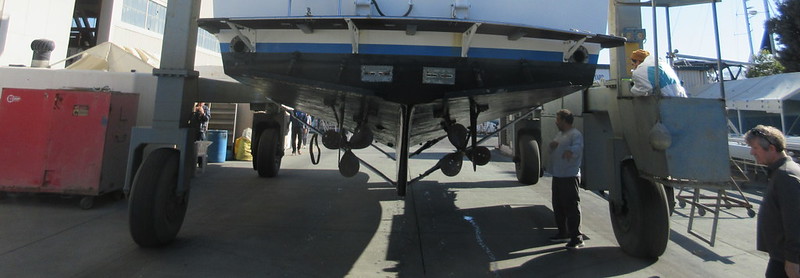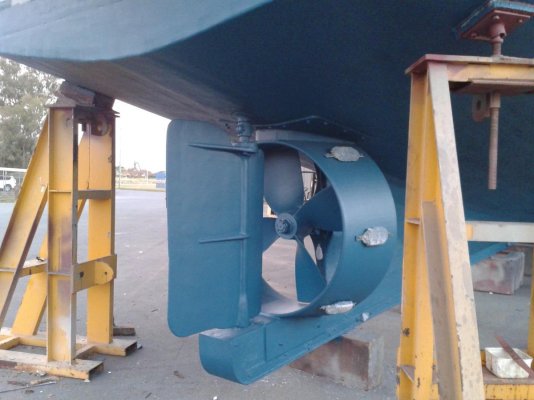My twin screws and short rudders are also skeg protected;
I think the reality is somewhere between the statement by Riverat and Scot's analysis.
My running gear is protected by a keel that is deeper than Riverat's, but the props and rudders still protrude beyond that straight line connecting the bottom of the keel and the chine. I have run over a telephone pole size log, hitting it while my line of travel was perpendicular to its resting position in the trough, and hitting closer to the middle of the log than to an end. That hit, at 7 - 7.5 knots, pushed down on the log, enough to ride over it for the full length of my keel, but the log never touched my chine. The outboard end of the log may have been out of the water, but wherever it was, the line it took was low enough to clear my rudder on that side, and the prop only took a light hit. My boat speed as the end of the keel passed the log was sufficient to clear the log before its floatation elevated it to the height of the bottom of the exposed rudder.
I conclude from this that the keel does provide a lot of protection, more if you can hit closer to the middle of a long log, less as your point of impact approaches either end.
Hitting a log in conditions where the sun is in your eyes, the troughs are at right angles to you, logs are frequent hazards, does a lot to improve your awareness and vigilance, and especially your choice of alternate directions to avoid those conditions. My encounter, described above, has kept me free of similar encounters since that occurred, some 25 years ago.





